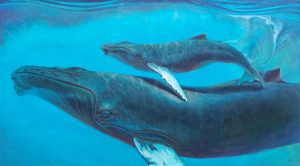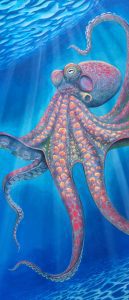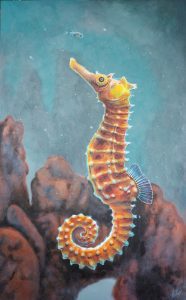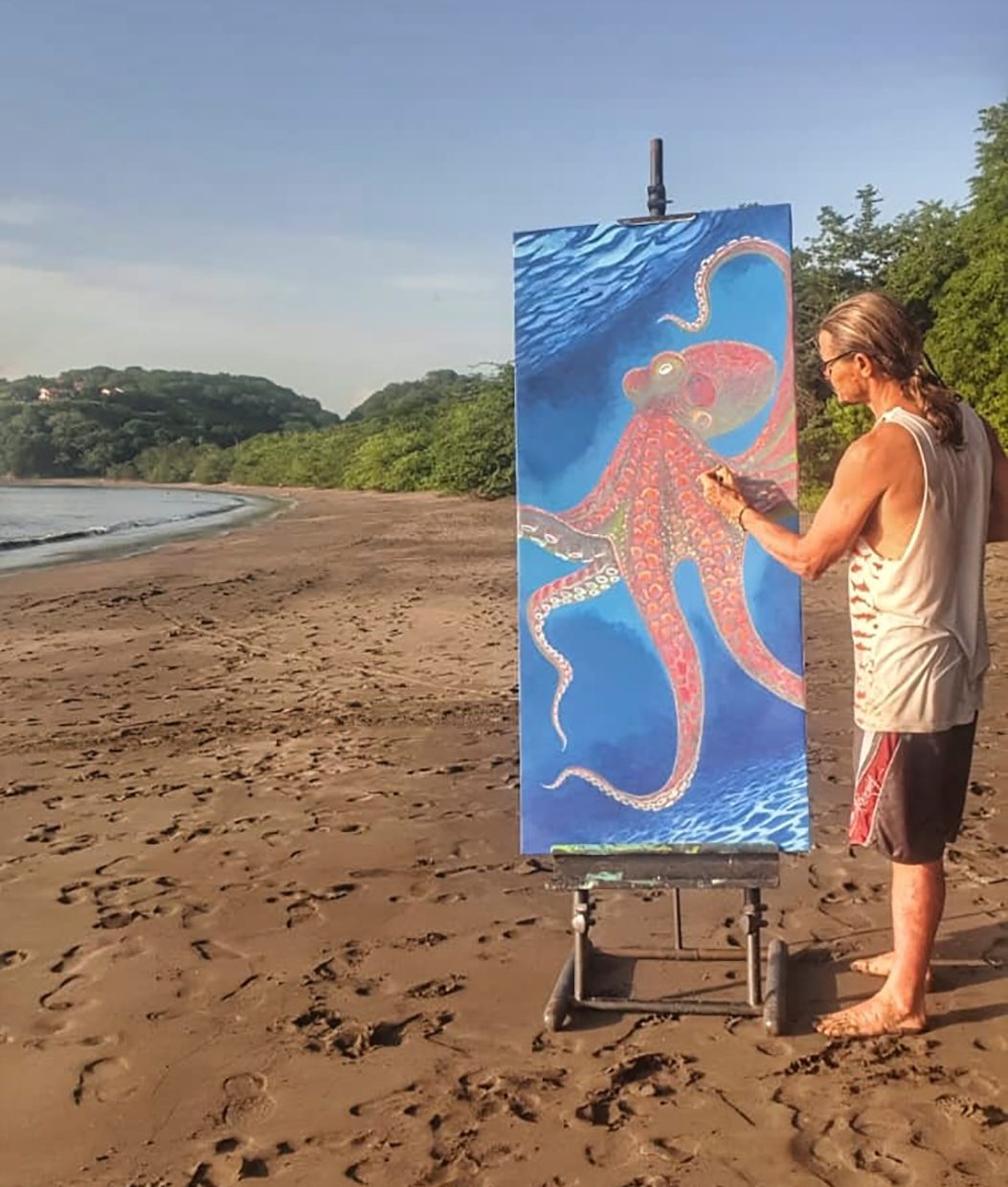I’m delighted to introduce Howler readers to a new Artist Spotlight series called Making a Scene. In every issue, we’ll feature the selected works of a different artist, sharing personal insights into the inspiration and creative process behind each one.
First up is Carlos Hiller, whose paintings and sculptures have been showcased in previous Howler articles. We hope you enjoy catching up with Carlos now, giving us these remarkable backstories of nature brought to life on his painted canvases.

Te Sigo: Ballenas Jorobadas (I Follow You: Humpback Whales)
A couple of years ago, during the safety stop on a diving trip to Caño Island, southern Costa Rica, I had a wonderful chance meeting with a humpback whale and its calf. When they encountered us, I am certain they were astonished to see us and changed their course. Luckily, my video camera captured the entire experience.
Back at the studio I repeatedly watched the filming frame-by-frame and chose that magical moment of contact between mother and calf.
It is vital to me that my paintings are based on my own experiences, and this is certainly one of the most astonishing.
Pulpo Seguro (Confident Octopus)
Painting in the tranquility and comfort of the studio is wonderful, but sometimes the sun shines brightly and it makes you want to just go to the beach. On those special times, I take my easel, a canvas, the paints and brushes, some sandwiches and move everything to a beach.
On this occasion, I went to Playa Panama. This painting emerged in a single painting session — I started in the morning and by the afternoon I was already giving the last brushstrokes. As the sun shone so radiantly, I decided to play with iridescent colors. When I arrived at the studio, I realized the beautiful effect achieved with these paintings — metallic and bright reflections, as if the afternoon sunlight was still captive in the painting.
Canopy (Monteverde)
Many years ago, I was submerged in the cloud forest. Although I dedicate myself to painting mostly underwater scenes of the Costa Rican Pacific Ocean, from time to time I like to return to my pictorial origins: the jungle.
In that forest bath, I looked up and was surprised to see something that I considered enchanting: in the treetops were drawn sky paths, formed by a highly orderly arrangement of leaves. Amazed, I photographed this and when I returned to the studio, decided to paint that special phenomenon.
Thus arose my first work in what would later be a series of paintings called “Canopy.” Sometime later, I read an article about this curious effect that bears the name “The Crown Shyness,” where crowns of fully stocked trees which do not touch each other form a canopy with channel-like gaps. Research suggests that it is an adaptive behavior that might inhibit the spread of leaf-eating insect larvae.
Now, paying close attention, I often encounter this phenomenon: in Monteverde, Arenal and Rincón de la Vieja National Park.

Equs Et Larvae: Caballito de Mar (Equs Et Larvae: Seahorse)
 Playa Ocotal is one of my favorite snorkeling spots. In areas where the corals are being reborn, from time to time I find some seahorses. The life of these fascinating creatures is intimately linked to the existence of coral reefs, whose populations are in decline around the world.
Playa Ocotal is one of my favorite snorkeling spots. In areas where the corals are being reborn, from time to time I find some seahorses. The life of these fascinating creatures is intimately linked to the existence of coral reefs, whose populations are in decline around the world.
Unfortunately, the seahorse is a species whose extraction for aquariums is common. Along with sharks and other reef fish, they have the uncertain status of “marine resources,” making them susceptible to commercial exploitation.
This painting seeks to reflect on the fragility of our planet and the need to protect its diverse ecosystems.For more information on Carlos Hiller, please visit our website at
www.HiddenGardenArt.com, or contact us at info@HiddenGardenArt.com






